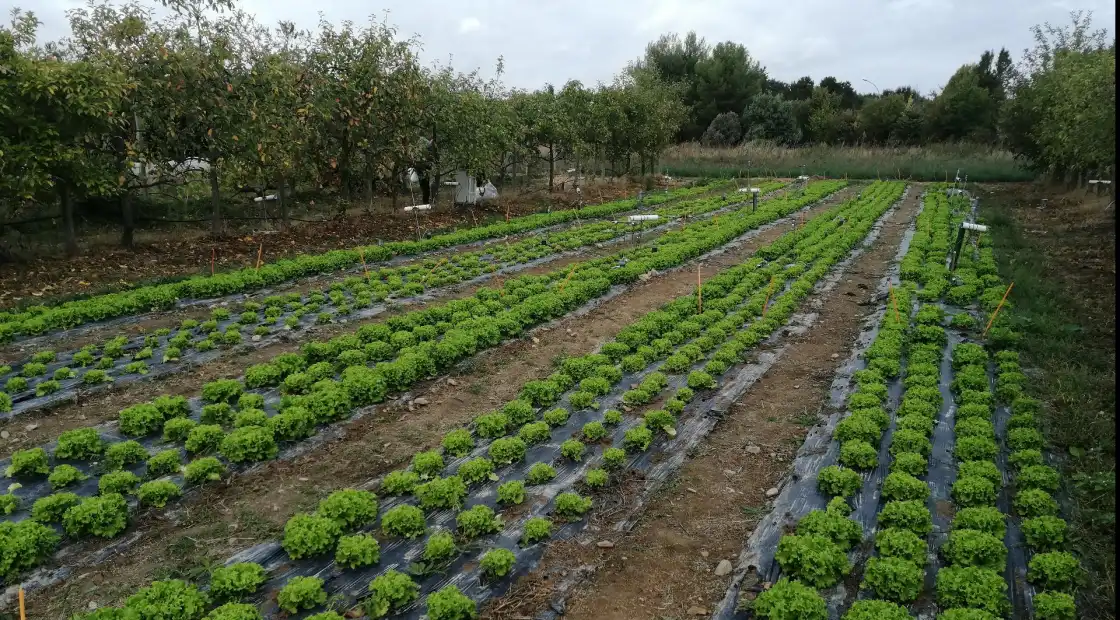Organic amendments: impact on soil fertility and management of inputs

Understanding organic matter and its role in soil fertility
At SIVAL 2024, a conference dedicated to the impact of organic soil improvers on soil fertility was given by teacher-researchers in soil science from the Institut Agro Rennes-Angers. The presentation focused on organic matter cycles, soil fertility indicators, and the results of a recent project to convert biowaste into compost. These inputs represent major levers for meeting the challenges of carbon sequestration, climate regulation and the reduction of greenhouse gas emissions.
Organic matter is made up of three major components. Living organic matter includes organisms such as earthworms, roots and micro-organisms, all of which are involved in decomposition. Next, fresh organic matter includes debris, crop residues and root exudates. Finally, stabilized organic matter - also known as humus - comes from the slow degradation of fresh matter, and provides the soil with properties essential to its fertility. Its degradation produces elements such as nitrates and phosphates, which can be assimilated for plant growth. Despite its low proportion in soils, organic matter plays a key role in their dynamics and structure.
Furthermore, organic matter transformation cycles include processes such as humification, which contributes to the stabilization of humus, and mineralization, which releases nutrients for crops. These mechanisms are based on a complex interaction between the soil's organic and mineral constituents. At the same time, emissions of gases, notably carbon dioxide, result from the biological activity of soils, underlining the challenges of agricultural sustainability and the management of organic matter inputs.
Fertility indicators and soil analysis management
The properties of organic matter have an impact on three dimensions of fertility: physical, chemical and biological. These parameters determine, on the one hand, the structure and stability of soils against erosion and, on the other, their capacity to store the nutrients required by crops. For example, the clay-humus association creates a "fridge" for essential nutrients such as ammonium and phosphate. This complex also gives the soil mechanical strength, while promoting water infiltration and root anchorage.
However, a dynamic component of this organic matter is its ability to retain pollutants - be they heavy metals or phytosanitary substances. Although positive in the short term, these links with pollutants remain fragile and can dissolve, causing transfers to crops or groundwater. Consequently, the characterization of different soils relies on a set of physical indicators (such as erosion or texture), chemical indicators (organic matter content or pH) and biological indicators (earthworm diversity, soil respiration). Soil analyses carried out in laboratories help growers to adjust their farming practices, while taking into account annual balances to optimally maintain the organic matter stock.
Choosing the right organic amendment depends on specific objectives. For example, composts rich in stabilized organic matter promote carbon storage, while products with low stabilization rates, such as chicken manure, act quickly as nutrient fertilizers. These adjustments are designed to maintain a balanced fertility based on soil and crop specificities.
Results and tests on the agronomic recovery of biowaste
A research project carried out by a cooperative specializing in composting examined the agronomic use of composts derived from food waste. The trials, carried out in Angers, involved two types of soil with contrasting textures and three vegetable species (lettuce, radish, potato). The organic amendments studied included mixtures based on green and food waste, compared with a purely plant-based compost.
The results highlighted significant variations depending on the chemical and biological properties of the composts. For example, mixtures including biowaste had a higher fertilization rate, boosting crop yields. Composts rich in inorganic nitrogen performed particularly well, in contrast to those with a high carbon-nitrogen ratio. Overall, the trials showed an improvement in water retention capacity and soil quality, confirming the value of these local soil improvers in agriculture.
In addition, the analyses were carried out in compliance with environmental standards, with heavy metal levels below regulatory thresholds. However, questions remain as to the potential presence of phytosanitary residues in these composts. This remains a major concern for farmers, although this initial work confirms the potential of biowaste for sustainable uses and its benefits for vegetable crops.